 A roofing contractor can help control mold formation on roofs A roofing contractor in Charlotte NC and Indian Land SC can help manage and prevent mold formation on roofs. Mold growth on roofs is a common issue that homeowners often encounter. Not only can it be unsightly, but it can also cause structural damage if left unchecked. Understanding how and why mold forms on roofs is crucial for effective prevention and maintenance. In this article, we'll delve into the factors contributing to mold growth and highlight the types of roofs that are notorious for mold problems. Understanding Mold Formation Mold is a type of fungus that thrives in moist and dark environments. When it comes to roofs, several factors can contribute to the formation of mold:
Roof Types Prone to Mold
Preventing Mold on Roofs Now that we've explored the causes of mold formation on roofs and identified the roof types prone to mold, let's discuss prevention strategies:
How Professional Roofers Help Get Rid of Mold Dealing with mold on your roof can be a challenging task, especially when it has spread significantly. In such cases, seeking the assistance of professional roofers is often the most effective and safe way to address the issue. Here's how professional roofers can help you get rid of mold:
In conclusion, professional roofers play a crucial role in getting rid of mold on your roof. Their expertise, safety measures, and ability to address underlying issues make them the ideal choice for tackling mold problems effectively. Whether you're dealing with a small patch of mold or a more extensive issue, enlisting the services of professional roofers can help ensure the longevity and integrity of your roof while maintaining a healthy living environment in your home. Hire the best roofing contractor in Charlotte NC and Indian Land SC Advanced Roofing and Exteriors offers commercial roofing and residential roofing services to Charlotte, NC, and surrounding areas.
0 Comments
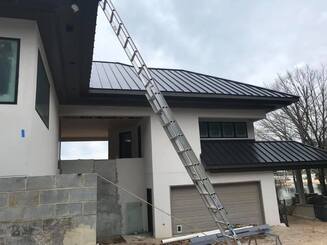 Roof repair contractors can help you avoid mistakes when protecting your roof Roof repair contractors in Charlotte NC and Indian Land SC can help you protect your roof by recommending proper maintenance tips. When it comes to protecting your home, one of the most critical aspects is ensuring the longevity and functionality of your roof. A well-maintained roof not only shields your home from the elements but also adds to its overall structural integrity and curb appeal. However, not all methods used to protect a roof are equal. In this article, we'll explore some of the worst ideas for protecting a roof that some homeowners have tried, along with examples of these misguided efforts. We'll also discuss the alternatives that professional roofers can advise to ensure your roof remains in top-notch condition. DIY Coating Solutions: Some homeowners may attempt to extend the life of their roof by applying DIY coatings or sealants. While the intention is good, the execution often falls short. Common examples include using cheap, off-the-shelf products that may not provide adequate protection. These coatings can crack, peel, or wear off quickly, leaving the roof vulnerable to leaks and damage. Professional Alternative: Roofers can recommend high-quality sealants and coatings that are specifically designed for the type of roofing material you have. They can ensure proper application, which is crucial for long-lasting protection. Layering New Shingles Over Old Ones: In an effort to save money, some homeowners opt to add a second layer of shingles over existing ones. This practice can lead to a host of problems. The added weight can strain the roof's structure, and it becomes challenging to identify and repair underlying issues like water damage or rot. Moreover, this method may not adhere to local building codes. Professional Alternative: A professional roofer will advise removing the old shingles before installing new ones. This allows for a thorough inspection of the roof deck and ensures that any underlying problems are addressed before the new roof is installed. Neglecting Regular Maintenance: Ignoring routine roof maintenance is a common mistake. Homeowners who neglect to inspect and maintain their roofs regularly can miss early signs of damage or wear. This can result in minor issues escalating into costly repairs or even premature roof replacement. Professional Alternative: Roofers recommend regular inspections to catch and address minor issues before they become major problems. They can clean gutters, remove debris, and perform necessary repairs to keep your roof in optimal condition. Installing Improper Ventilation: Some homeowners believe that blocking roof vents will keep their homes warmer in the winter or cooler in the summer. However, this can lead to moisture buildup and poor air circulation in the attic, which can cause roof damage and even impact the overall indoor air quality. Professional Alternative: Roofers understand the importance of proper ventilation. They can recommend and install the right ventilation system to maintain the right balance between temperature and moisture levels in your attic. Using Inadequate Insulation: Inadequate insulation can contribute to ice dams, which can damage your roof and lead to leaks. Some homeowners may not invest in proper insulation, thinking it's unnecessary. Professional Alternative: Professional roofers can assess your insulation needs and recommend the right type and amount to prevent ice dams and improve energy efficiency. Neglecting Gutter Maintenance: Gutters play a crucial role in directing rainwater away from your roof and foundation. Some homeowners neglect cleaning and maintaining their gutters, allowing debris to accumulate. Clogged gutters can lead to water overflow, which can damage your roof and even cause structural problems. Professional Alternative: Roofers emphasize the importance of regular gutter cleaning and maintenance. They can also install gutter guards to prevent debris buildup and ensure proper water drainage. Overlooking Roof Flashing Issues: Roof flashing, typically made of metal or other weather-resistant materials, is used to seal joints and transitions in the roof. Over time, flashing can deteriorate or become damaged, leading to leaks. Some homeowners ignore flashing issues, assuming they are minor. Professional Alternative: Roofers can inspect and repair or replace damaged flashing. This prevents water infiltration and extends the life of your roof. Using the Wrong Roofing Material: Selecting the wrong roofing material for your climate and environment can result in premature roof failure. For example, using asphalt shingles in an area prone to wildfires can be a significant risk. Professional Alternative: Roofers consider local weather conditions, climate, and your specific needs when recommending roofing materials. They can suggest materials like metal roofing or fire-resistant shingles where appropriate to enhance your roof's longevity. Ignoring Ventilation and Insulation: Inadequate roof ventilation and insulation can lead to a range of problems, including excessive energy bills, ice dams, and condensation issues. Some homeowners underestimate the importance of proper ventilation and insulation. Professional Alternative: Roofers assess your attic's ventilation and insulation needs, ensuring that they are installed correctly to prevent moisture problems, reduce energy consumption, and extend the life of your roof. Delaying Repairs: Many homeowners tend to postpone roof repairs, thinking they can wait until the problem becomes more severe. However, small issues can escalate quickly, leading to extensive damage and higher repair costs. Professional Alternative: Roofers recommend addressing even minor roof problems promptly. Timely repairs can prevent further damage, prolong your roof's life, and save you money in the long run. In conclusion, protecting your roof should be a top priority as a homeowner. Avoiding these worst ideas for roof protection and following the professional alternatives recommended by experienced roofers is essential to ensure the longevity and durability of your roofing system. Regular maintenance, proper ventilation, insulation, and addressing issues promptly are key practices to safeguard your investment and maintain a secure and comfortable home environment. By consulting with roofing professionals and investing in the right strategies, you can enjoy the peace of mind that comes with a well-protected roof. Work with the best roof repair contractors in Charlotte NC and Indian Land SC Advanced Roofing and Exteriors offers commercial roofing and residential roofing services to Charlotte, NC, and surrounding areas. 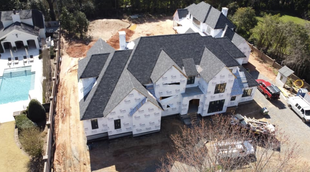 A roof installer can help you uncover sun damage to your roof A roof installer in Charlotte NC and Indian Land SC can help you understand the effects of excessive sunlight exposure on your roof. As the scorching summer months roll in, many homeowners bask in the warm embrace of sunlight. However, what may be a welcome delight for you could be a potential problem for your home's roof. Excessive sunlight exposure can have detrimental effects on your roof, causing damage that may go unnoticed until it becomes a significant issue. In this article, we will explore the various effects of excessive sunlight exposure on your roof and what homeowners should be on the lookout for post-summer. Fading and Discoloration One of the most apparent effects of excessive sunlight exposure on your roof is fading and discoloration. The sun's UV rays can cause shingles and roofing materials to fade over time, leading to a loss of aesthetic appeal. While this may not immediately impact the functionality of your roof, it can diminish the curb appeal of your home. Drying and Cracking Prolonged exposure to the sun's intense heat can cause roofing materials to dry out and become brittle. This can result in cracks, which can lead to leaks during heavy rain or snowfall. Cracking is especially common in asphalt shingles, and if left unaddressed, it can lead to costly repairs or even a full roof replacement. Warping and Curling Roofing materials such as shingles or tiles are susceptible to warping and curling due to excessive heat. When these materials warp or curl, they lose their ability to effectively protect your home from the elements. This can allow water to seep in, potentially causing interior damage and mold growth. Decreased Lifespan Excessive sunlight exposure can significantly reduce the lifespan of your roof. The constant onslaught of UV rays and heat can cause roofing materials to deteriorate faster than they would in more moderate climates. This means you may need to replace your roof sooner than expected, which can be a costly endeavor. Increased Energy Costs A sun-damaged roof can also affect your home's energy efficiency. When roofing materials degrade, they may not provide the same level of insulation they once did. This can lead to increased indoor temperatures during the summer months, forcing your air conditioning system to work harder and raising your energy bills. Moss and Algae Growth Another effect of excessive sunlight exposure on your roof, especially in regions with high humidity, is the growth of moss and algae. These organisms thrive in damp, shaded areas of your roof, and their presence can compromise your roofing materials. Moss and algae can trap moisture, leading to rot and deterioration, which can be particularly problematic for wooden shingles or tiles. Heat-Related Roofing Problems Extreme heat can lead to various heat-related issues for your roof. This includes thermal expansion and contraction, which can cause roofing materials to expand during the day and contract at night. Over time, this repetitive process can result in the loosening of shingles or tiles and the formation of gaps where water can infiltrate. Loss of Roof Coatings If your roof has protective coatings, excessive sunlight exposure can wear these coatings down over time. Roof coatings are essential for preventing damage from UV rays and can help extend the life of your roof. Inspect your roof for any signs of coating deterioration and consider reapplying it as needed to maintain its protective properties. Skylight and Ventilation Concerns Roof features like skylights and ventilation systems can also be affected by excessive sunlight exposure. The seals around skylights may deteriorate, leading to potential leaks. Ventilation components, if not adequately maintained, can become less effective, impacting your home's energy efficiency. Solar Panels For homeowners with solar panels installed on their roofs, excessive sunlight exposure is both a benefit and a potential concern. While solar panels harness the sun's energy to generate electricity, the increased heat and UV exposure can cause the panels themselves to degrade over time. Regular maintenance and inspection of your solar panel system are essential to ensure optimal performance. What to Look Out for After Hot Summer Months After a particularly hot summer, it's essential for homeowners to inspect their roofs for any signs of damage. Here are some key things to look out for:
Taking Action for Roof Health To mitigate the effects of excessive sunlight exposure and extend the life of your roof, consider these proactive steps:
Hire the best roof installer in Charlotte NC and Indian Land SC Advanced Roofing and Exteriors offers commercial roofing and residential roofing services to Charlotte, NC, and surrounding areas. 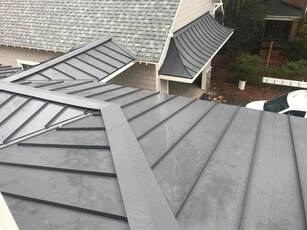 Metal roofing contractors can help you know if the metal roof is right for your home Metal roofing contractors in Charlotte NC and Indian Land SC can help you understand the benefits of a metal roof. When it comes to choosing the right roofing material for your home, there are several options to consider. One choice that has gained popularity in recent years is metal roofing. While traditional roofing materials like asphalt shingles and wood shakes have been the norm for decades, metal roofs offer a range of benefits that make them a compelling choice for homeowners. In this article, we will explore the top reasons why this type of roof may be the right choice for you. Exceptional Durability One of the primary reasons homeowners opt for metal roofing is its exceptional durability. Metal roofs are known to last much longer than traditional roofing materials. While asphalt shingles may need replacement every 15-20 years, a well-maintained metal roof can last 50 years or more. This longevity means that you'll likely never have to worry about re-roofing during your lifetime, saving you money and hassle in the long run. Weather Resistance Metal roofing is highly resistant to the elements. It can withstand heavy rain, snow, hail, and high winds better than many other roofing materials. This resilience makes it an excellent choice for homes in regions with extreme weather conditions. Metal roofs are also fire-resistant, providing an added layer of safety for your home. Energy Efficiency Metal roofing can contribute to improved energy efficiency in your home. Many metal roofing systems are designed with reflective coatings that help to reduce heat absorption. This means that during hot summer months, your home will stay cooler, reducing the need for excessive air conditioning. In turn, this can lead to lower energy bills and a more comfortable living environment. Environmentally Friendly If you're concerned about your environmental footprint, metal roofing is a sustainable choice. Most its materials are made from recycled materials, and when it's time to replace your roof, the old metal can be recycled again. Additionally, the long lifespan of metal roofs means fewer materials end up in landfills over time. Low Maintenance Metal roofs are relatively low maintenance compared to other roofing materials. They do not require the frequent inspections and repairs that some other options might. Periodic inspections and the removal of debris are typically all that's needed to keep your metal roof in excellent condition. Aesthetic Appeal Metal roofing isn't just practical; it's also aesthetically pleasing. With a wide variety of styles and finishes available, you can choose a metal roof that complements the architectural style of your home. Whether you prefer the classic look of standing seam metal or the appearance of cedar shake, there's a metal option to suit your taste. Increased Home Value Investing in a metal roof can increase the overall value of your home. Potential buyers are often willing to pay more for a home with a durable and long-lasting roof, making it a wise financial decision in the long term. Lightweight and Structural Benefits Metal roofing is notably lightweight, which can be advantageous for your home's structural integrity. Unlike heavy roofing materials like concrete tiles or slate, metal roofing puts less stress on the supporting structure. This can be particularly important in areas prone to earthquakes or for older homes that may not have been designed for heavy roofing loads. Snow and Ice Shedding For those living in snowy climates, metal roofs have the benefit of shedding snow and ice quickly. The smooth surface of metal roofing prevents the accumulation of snow, reducing the risk of ice dams and water damage to your home. This can save you from potentially costly repairs during the winter months. Long-Term Cost Savings While the initial cost of installing a metal roof may be higher than some other roofing materials, the long-term cost savings make it a wise investment. As mentioned earlier, metal roofs can last 50 years or more with minimal maintenance. This longevity means you'll avoid the recurring expenses associated with replacing traditional roofing materials every couple of decades. Additionally, the energy efficiency of metal roofing can lead to lower utility bills over time, further enhancing your savings. Warranty Coverage Many reputable metal roofing manufacturers offer extended warranties on their products, which can provide peace of mind for homeowners. These warranties often cover the finish, color fading, and even hail damage, ensuring that your investment is protected. Easy Installation Metal roofing is relatively easy to install, which can lead to a quicker and less disruptive construction process. This can be especially beneficial if you need to replace your roof in a hurry or if you're concerned about the noise and inconvenience of a lengthy roofing project. Resale Value If you ever decide to sell your home, a metal roof can be a strong selling point. Potential buyers are increasingly attracted to homes with metal roofs because of the many advantages they offer. This can make your property more appealing in a competitive real estate market. In conclusion, a metal roof can be the right choice for you for a multitude of reasons. Its durability, resistance to the elements, energy efficiency, environmental benefits, low maintenance, and potential cost savings make it a compelling option for homeowners. Whether you're building a new home or considering a roof replacement, it's worth exploring the benefits of metal roofing to determine if it's the best fit for your needs and preferences. With its long list of advantages, a metal roof can provide you with decades of protection and peace of mind. Work with the best metal roofing contractor in Charlotte NC and Indian Land SC Advanced Roofing and Exteriors offers commercial roofing and residential roofing services to Charlotte, NC, and surrounding areas. 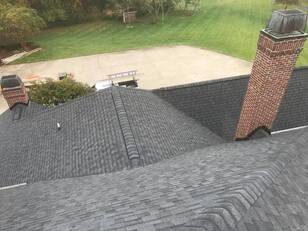 Shingle repair experts can help you decide between repair and replacement Shingle repair experts in Charlotte NC and Indian Land SC can help you know when to replace your roof or to consider repair. Roofing materials play a crucial role in protecting our homes from the elements, and over time, they may require replacement due to wear and tear. One common consideration homeowners face is whether to replace a shingle roof with a metal roof. This decision can be influenced by various factors, including durability, cost-effectiveness, environmental impact, and aesthetics. In this article, we'll explore when it's a good idea to replace a shingle roof with a metal roof. Durability and Longevity One of the primary reasons homeowners consider switching to a metal roof is its exceptional durability and longevity. Metal roofs can often last two to three times longer than traditional asphalt shingle roofs. While asphalt shingles typically have a lifespan of 20-30 years, metal roofs can last 50 years or more with proper maintenance. If your shingle roof is nearing the end of its lifespan or has experienced frequent repairs, replacing it with a metal roof could provide you with peace of mind and long-term cost savings. Severe Weather Conditions If you live in an area prone to severe weather conditions such as heavy rain, hail, snow, or high winds, a metal roof can offer superior protection. Metal roofs are highly resistant to damage from these elements, minimizing the risk of leaks, rot, and structural issues. While shingle roofs can be susceptible to wind uplift and shingle loss, metal roofs are designed to withstand such challenges, making them a wise choice for homeowners in storm-prone regions. Energy Efficiency Metal roofs are known for their energy-efficient properties. They reflect a significant portion of the sun's rays, reducing heat absorption and helping to keep your home cooler during hot months. This reflective quality can lead to lower energy bills and a reduced strain on your HVAC system. If you're looking to improve your home's energy efficiency and decrease your carbon footprint, replacing a shingle roof with a metal roof could be a valuable investment. Environmental Considerations For environmentally conscious homeowners, the choice between shingle and metal roofs involves considering the impact on the planet. Shingle roofs contribute to landfill waste due to their shorter lifespan and need for replacement. On the other hand, metal roofs are often made from recyclable materials and can be recycled at the end of their life. Choosing a metal roof can align with sustainable practices and contribute to reducing your home's overall environmental impact. Aesthetics and Resale Value Metal roofs are available in a wide range of styles, colors, and finishes, allowing homeowners to choose a design that complements their home's aesthetics. If you're looking to enhance your home's curb appeal or create a distinct architectural statement, a metal roof offers versatility in design. Additionally, a well-maintained metal roof can add to your home's resale value, attracting potential buyers with its durability and modern appeal. Consideration of Costs While metal roofs often have a higher upfront cost compared to asphalt shingle roofs, they can offer long-term savings due to their durability and energy efficiency. When considering a roof replacement, it's important to weigh the initial investment against the potential benefits over the roof's lifespan. If you plan to stay in your home for many years, a metal roof can be a financially wise choice. Installation and Maintenance When considering the transition from a shingle roof to a metal roof, it's important to understand the installation process and ongoing maintenance requirements. Metal roof installation is typically more intricate than shingle installation due to the need for specialized techniques and materials. Hiring experienced professionals for the installation is crucial to ensure the roof's integrity and longevity. Regular maintenance is essential for any roofing material, including metal. While metal roofs are generally low-maintenance, it's still important to inspect and clean them periodically. Clearing debris, inspecting for loose screws or fasteners, and addressing any potential issues promptly can help extend the lifespan of your metal roof. Noise Considerations One concern some homeowners have about metal roofs is the potential for increased noise during rain or hailstorms. While it's true that metal roofs can be noisier than shingle roofs under certain conditions, advancements in roofing technology have led to soundproofing measures. Many modern metal roofs are designed with insulation and underlayment materials that minimize noise, ensuring a comfortable indoor environment even during heavy rainfall. Local Building Codes and Regulations Before making the decision to replace your shingle roof with a metal roof, it's essential to research and understand the local building codes and regulations in your area. Some regions have specific requirements for roofing materials, colors, and installation methods. Ensuring compliance with these regulations is vital to avoid potential legal issues and ensure a smooth replacement process. Personal Preference and Lifestyle Ultimately, the decision to replace a shingle roof with a metal roof should align with your personal preferences and lifestyle. Consider your long-term plans for the home, your budget, and your priorities. If you value durability, energy efficiency, and a modern aesthetic, a metal roof might be the right choice for you. On the other hand, if you prefer a more traditional look or have budget constraints, sticking with shingles could be the best option. Replacing a shingle roof with a metal roof is a significant decision that involves evaluating various factors ranging from durability and energy efficiency to aesthetics and costs. Metal roofs offer a range of benefits, including longevity, protection against severe weather, energy efficiency, and environmental sustainability. However, the decision should be based on careful consideration of your individual needs and circumstances. Before proceeding with a roof replacement, consult with reputable roofing professionals to assess your existing roof's condition and discuss the feasibility of transitioning to a metal roof. By making an informed decision, you can ensure that your home is well-protected and that your investment in a new roof pays off for years to come. Whether you choose shingles or metal, the most important aspect is to have a roof that offers reliable protection and enhances the overall value of your home. Work with Shingle repair experts in Charlotte NC and Indian Land SC Advanced Roofing and Exteriors offers commercial roofing and residential roofing services to Charlotte, NC, and surrounding areas. 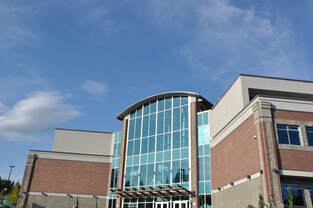 A commercial roofer can help you decide if installing tile roofing is worth it A commercial roofer in Charlotte NC and Indian Land SC can help you understand the benefits of installing a tile roof. When contemplating a roofing solution for your commercial establishment, the choice is not merely about functionality; it's also a statement of aesthetic, durability, and long-term value. Among the diverse options available, the tile roof emerges as a superior contender, boasting unmatched durability, timeless charm, and energy-efficient qualities. In this comprehensive exploration, we delve deeper into the advantages and essential considerations of installing a tile roof on your commercial property, empowering you to make an educated decision regarding the wisdom of this investment. Advantages of Tile Roofing Durability and Longevity: A Roof for Generations At the core of the tile roofing's allure lies its extraordinary durability and remarkable lifespan. In contrast to some roofing materials that succumb to the elements over time, tile roofs stand strong. They remain impervious to heavy rains, hail, and even strong winds, showcasing minimal wear and tear. In fact, instances of tile roofs lasting over a century are not unheard of, translating to considerable cost savings over the long haul. Aesthetics: Elevating Architectural Elegance Tile roofs carry an air of timeless sophistication that can transform the entire look of your commercial edifice. With an extensive spectrum of shapes, styles, and hues at your disposal, customization becomes an art. Whether your building embodies modern sleekness, Mediterranean warmth, or classic allure, you can seamlessly integrate tile options that blend harmoniously, adding to the visual splendor. The grace and elegance that a tile roof brings contribute to a lasting and positive impression on patrons and passersby. Energy Efficiency: Sustainable Comfort Amidst growing concerns about energy consumption, tile roofs provide a strategic advantage. Their innate insulating properties serve as a natural barrier to temperature fluctuations. During scorching summers, these roofs deflect sunlight, minimizing heat absorption and reducing the reliance on cooling systems. In the colder months, the insulation capacity helps retain indoor warmth. This energy-efficient trait translates to tangible reductions in utility bills and an environment that nurtures occupant comfort. Low Maintenance: Minimal Effort, Maximum Returns The allure of tile roofs also lies in their low-maintenance nature, setting them apart from many other roofing materials. Resilient against common issues such as rot, insects, and fire, these roofs require infrequent repairs or replacements. Regular inspections and basic maintenance routines like clearing debris and replacing damaged tiles are typically sufficient to uphold the impeccable condition of your tile roof, saving you both time and money. Key Considerations Before Installing a Tile Roof Cost: Investment for a Lifetime While tile roofing boasts numerous merits, it's imperative to acknowledge that the initial installation cost can surpass that of some alternative roofing materials. This stems from the specialized skills, labor, and premium materials required for proper installation. However, this cost should be evaluated through the lens of long-term advantages. The extended lifespan of tile roofs and reduced repair needs render the initial investment a prudent choice in the grand scheme of things. Structural Considerations: Ensuring Stability Given the substantial weight of tile roofs in comparison to certain counterparts like asphalt shingles, structural assessments are paramount. Prior to embracing a tile roof, a meticulous evaluation of the building's structural integrity is imperative. If reinforcement is warranted to accommodate the weight of the tiles, this may lead to additional expenses and potential project timeline extensions. Engaging a structural engineer or seasoned roofing professional is non-negotiable to guarantee the building's stability and overall safety. Professional Installation: Skillful Precision Installing a tile roof isn't a run-of-the-mill endeavor; it demands expertise and experience. Ill-executed installations can trigger leaks, breakages, and other complications that could potentially escalate costs. Engaging a certified roofing contractor well-versed in tile roof installations is paramount to ensure the job is executed with precision and efficiency. Such professionals can also provide valuable insights into maintenance best practices and protocols for addressing repairs. Replacement and Repairs: Addressing Challenges Proactively Although tile roofs are celebrated for their robustness, individual tiles might still succumb to damage, particularly in regions prone to severe weather phenomena. Replacing or repairing these tiles is a nuanced process, often requiring more time and intricacy compared to alternative roofing materials. Therefore, it's prudent to factor in potential repair and replacement costs when gauging the long-term value of a tile roof. Is Installing a Tile Roof Worth the Money? The decision to install a tile roof on your commercial building depends on various factors, including your budget, aesthetic preferences, and long-term goals. If you value durability, energy efficiency, and a classic appearance, a tile roof could be a worthwhile investment. While the initial cost may be higher, the potential for a century-long lifespan and minimal maintenance costs can make tile roofing an economical choice over time. Before making a decision, it's recommended to consult with a professional roofing contractor who can assess your building's suitability for a tile roof and provide you with a detailed cost estimate. By weighing the benefits against the considerations, you can make an informed choice that aligns with your business's needs and objectives. In summary, the decision to install a tile roof on your commercial property warrants meticulous consideration of an array of factors. If durability, energy efficiency, and aesthetic appeal are high on your priority list, a tile roof beckons with a compelling proposition. Despite the initial higher costs and structural deliberations, the prospect of a roof that endures generations and necessitates minimal maintenance can triumph over these initial challenges. Engaging with roofing professionals and engaging in an informed assessment of pros and cons equips you to make an astute choice that not only caters to your commercial property's requisites but also elevates its intrinsic worth. Work with the best commercial roofer in Charlotte NC and Indian Land SC Advanced Roofing and Exteriors offers commercial roofing and residential roofing services to Charlotte, NC, and surrounding areas. 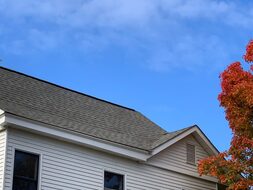 Reputable roofers can help you avoid getting ripped off Roofers in Charlotte and Indian Land NC can help you maintain a functional roof and enjoy value for money. How do they guarantee that? A reputable roofer can help you avoid getting ripped off. Roofing projects are significant investments that require careful consideration and expert guidance. Unfortunately, there are cases where unscrupulous contractors may take advantage of homeowners, leading to subpar workmanship and overcharging. To ensure that you're getting the quality service you deserve, it's essential to be aware of potential red flags that your roofing contractor might be ripping you off. In this article, we'll explore some telltale signs to watch out for. Unrealistically Low Bids Beware of roofing contractors who offer bids that seem too good to be true. While a low bid might initially appear enticing, it could signal potential problems. Contractors cutting corners on costs may compromise the quality of materials or workmanship, leading to issues down the line. Always compare bids from multiple contractors to get a sense of the average cost for your project in your area. Remember that quality work comes at a reasonable price, and excessively low bids might indicate hidden costs or a lack of commitment to your project's integrity. Pressure for Immediate Decisions Reputable roofing contractors understand the importance of informed decision-making. If a contractor is pushing you to sign a contract or make a deposit on the spot, exercise caution. Rushed decisions can lead to regrets later on. A trustworthy contractor will give you the time you need to review the contract, compare quotes, and seek advice if necessary. Don't succumb to high-pressure tactics; take your time to ensure you're making the right choice for your roofing project. Lack of Written Contract A well-drafted written contract is your safeguard against misunderstandings and disputes. A reliable contractor will provide a detailed contract that outlines the scope of work, materials to be used, project timeline, payment schedule, and any warranties. If a contractor hesitates to provide a written contract or offers one that is vague, be cautious. Without a clear and comprehensive contract, you'll have no official record of what was agreed upon, making it difficult to hold the contractor accountable for any deviations from the original plan. No Proof of License and Insurance Legitimate roofing contractors are licensed and insured as required by law. These credentials not only demonstrate their professionalism but also protect you from liability in case of accidents or damage during the project. Request proof of their license and insurance and verify their authenticity with relevant authorities. A contractor unwilling or unable to provide these credentials may be operating outside the law or trying to avoid accountability. Request for Full Payment Upfront Paying in full before any work is done is a risky move. Reputable contractors typically ask for a reasonable deposit upfront and follow a structured payment schedule as the project progresses. Contractors demanding full payment upfront could be attempting a scam where they disappear after receiving the money, leaving you with incomplete or shoddy work. Protect yourself by agreeing to a payment schedule that aligns with the project milestones. Substandard Materials and Workmanship The quality of materials and workmanship directly impacts the longevity and performance of your roof. Unscrupulous contractors might cut costs by using subpar materials, leading to premature deterioration and frequent repairs. Inferior workmanship can result in leaks, poor insulation, and other issues that compromise the integrity of your home. Prioritize contractors who provide transparency about the materials they use and who have a track record of delivering high-quality work. Unexpected Additional Costs Some dishonest contractors intentionally leave out certain costs from their initial estimate to make their bid appear more appealing. As the project progresses, they then present unexpected charges, catching you off guard. To avoid surprises, ask for a comprehensive breakdown of potential expenses before work begins. If additional costs arise, request a clear explanation and ensure they are justified and reasonable. Difficulty in Communication Effective communication is a cornerstone of a successful roofing project. If a contractor is consistently hard to reach, delays in responding to your inquiries, or avoids addressing your concerns, it's cause for concern. Open and transparent communication is indicative of a trustworthy contractor who values your input and aims to ensure your satisfaction throughout the project. No Local References or Portfolio Reputable contractors often have a list of references from satisfied local clients. Request these references and take the time to contact them, asking about their experience with the contractor. Furthermore, a lack of a portfolio showcasing completed projects might indicate inexperience or an attempt to hide a history of poor work. A reliable contractor should have a track record of successful projects that they're proud to share with potential clients. Lack of Permits Roofing projects typically require permits from local authorities to ensure compliance with building codes and regulations. A contractor who avoids obtaining the necessary permits or claims they aren't needed is a major red flag. Skipping permits not only risks legal consequences but also suggests a disregard for quality and safety standards. A trustworthy contractor will handle all necessary permits to ensure a smooth and compliant roofing project. When hiring a roofing contractor, being vigilant is essential to safeguard your investment. By recognizing these warning signs and conducting thorough research, you can avoid falling victim to unscrupulous practices. Remember to prioritize transparent communication, a detailed contract, and verifiable credentials when selecting a contractor. A reputable contractor will prioritize your needs, deliver quality workmanship, and ensure that your roofing project is a success. Work with the best roofers in Charlotte and Indian Land NC Advanced Roofing and Exteriors offers commercial roofing and residential roofing services to Charlotte, NC, and surrounding areas. 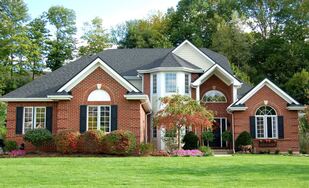 Residential roofing experts can help prevent clogged gutters Residential roofing experts in Charlotte and Indian Land NC can help prevent broken tiles from clogging your gutters. Roof maintenance is a critical aspect of ensuring the longevity and structural integrity of your home. One common issue that homeowners face is clogged gutters due to debris from roofing tiles. In this article, we will discuss effective strategies to prevent roofing tiles from clogging your gutters and the potential consequences of neglecting this issue. Understanding the Problem: Roofing Tiles and Gutter Clogs Roofing tiles play a vital role in protecting your home from the elements, and they come in various materials such as asphalt, clay, concrete, and metal. Over time, these tiles can deteriorate due to weathering, impact, or age, causing them to crack or break. When roofing tiles break, small fragments can dislodge and fall into your gutters, eventually leading to clogs. Preventive Measures: How to Stop Roofing Tiles from Clogging Gutters Preventing roofing tiles from clogging your gutters requires a combination of proactive maintenance and careful consideration of your roofing system. Here are some effective strategies to help you avoid this issue:
Consequences of Neglecting Clogged GuttersAllowing areas of your roof to start being flooded by clogged gutters can lead to several serious consequences:
Addressing Clogged Gutters: Steps to Take If you find that your gutters are already clogged due to roofing tile debris or other materials, it's important to take immediate action to prevent further damage. Here are the steps to address clogged gutters:
Professional Help: When to Call an Expert While many homeowners can handle basic gutter maintenance, there are situations where professional assistance is recommended:
A Holistic Approach to Home Maintenance Maintaining your roofing tiles and gutters is an integral part of ensuring the overall health and longevity of your home. By taking a proactive approach to roof inspections, addressing broken tiles promptly, and implementing preventive measures like gutter guards, you can avoid the hassles and potential damages caused by clogged gutters. Remember that neglecting clogged gutters can lead to water damage, foundation issues, and compromised roof integrity, all of which can be costly and time-consuming to rectify. Whether you choose to perform the maintenance yourself or seek professional help, a little effort goes a long way in preserving the beauty and functionality of your home. Hire the best residential roofing experts in Charlotte and Indian Land NC Advanced Roofing and Exteriors offers commercial roofing and residential roofing services to Charlotte, NC, and surrounding areas. 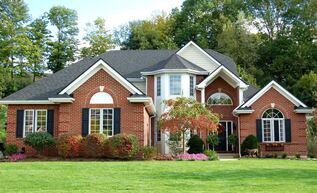 A roofing company can insulate your roof to improve your home’s energy efficiency Charlotte’s best roofing company can help you make your home more energy efficient by improving its insulation. A well-insulated roof is a crucial aspect of maintaining a comfortable and energy-efficient home. Proper insulation not only helps regulate indoor temperatures but also contributes to lower energy bills and reduced environmental impact. In this article, we will explore the importance of roof insulation, whether better insulating your roof automatically means your home is better insulated, what to do if your roof isn't insulated at all, and the various roofing material options available to homeowners. Importance of Roof Insulation Roof insulation plays a vital role in maintaining a comfortable indoor environment. In cold climates, insulation helps to retain heat and prevent warmth from escaping through the roof. In warmer climates, insulation keeps the hot air out and maintains cooler indoor temperatures. By creating a barrier between your living space and the external environment, proper roof insulation contributes significantly to energy efficiency. Does Better Roof Insulation Mean Better Home Insulation? While improving roof insulation is an essential step in enhancing your home's energy efficiency, it doesn't automatically mean your entire home is better insulated. Home insulation involves a combination of measures, including wall insulation, floor insulation, and sealing gaps and cracks. To achieve comprehensive home insulation, it's important to address all areas of potential heat transfer and air leakage. Roof Insulation Strategies for Uninsulated Roofs If your roof isn't insulated at all, you have several options to rectify the situation. The most common methods include:
Metal vs. Shingles vs. Tile Roofs When it comes to roofing materials, each option has its pros and cons in terms of insulation:
Other Roofing Material Options Beyond metal, shingles, and tiles, homeowners have several other roofing material options to consider:
Installation Considerations for Optimal Roof Insulation Achieving effective roof insulation requires proper installation techniques. Here are some important considerations to ensure your insulation efforts yield the best results:
Roofing Material Maintenance and Longevity Selecting the right roofing material is only part of the equation; proper maintenance is essential for ensuring your roof's longevity and insulation effectiveness:
In conclusion, better insulating your roof is a valuable investment in improving your home's energy efficiency and comfort. While it contributes significantly to maintaining optimal indoor temperatures, remember that comprehensive home insulation involves addressing all areas of potential heat transfer and air leakage. When selecting roofing materials, consider factors such as reflectivity, thermal mass, and insulation properties to make an informed decision. Whether you choose metal, shingles, tile, or other roofing materials, proper installation and regular maintenance are key to ensuring the longevity and effectiveness of your roof insulation. By following these guidelines and making informed choices, you can create a well-insulated and energy-efficient home that provides comfort and cost savings for years to come. Hire Charlotte’s best roofing company Advanced Roofing and Exteriors offers commercial roofing and residential roofing services to Charlotte, NC, and surrounding areas. 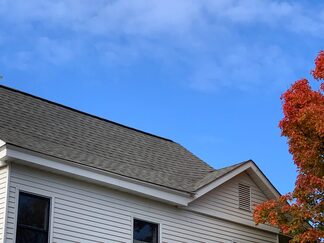 A roof installer can help protect your roof from summer storms Charlotte’s top roof installer can help you protect your roof from damage during summer storms. Summer storms can bring heavy rain, strong winds, and even hail, which can pose a significant threat to your home's roof. Damage to your roof not only compromises the structural integrity of your house but can also lead to costly repairs. By taking proactive steps to protect your roof, you can minimize the risk of damage during summer storms and ensure your home remains a safe and comfortable haven. In this article, we'll explore some essential tips for safeguarding your roof against the ravages of summer storms. Regular Roof Inspections Performing regular roof inspections is crucial for identifying any existing vulnerabilities or potential issues that could worsen during a storm. Look for loose or missing shingles, damaged flashing, and signs of wear and tear. Catching these problems early allows you to address them before they lead to more extensive damage. Maintain Gutters and Downspouts Clogged gutters and downspouts can lead to water accumulation on your roof, increasing the risk of leaks and water damage. Clean your gutters and downspouts regularly to ensure proper water drainage. Consider installing gutter guards to prevent debris buildup and facilitate water flow. Trim Overhanging Trees Overhanging branches can scrape against your roof during high winds, causing damage to shingles and other roofing materials. Trim back any branches that are within close proximity to your roof to reduce the risk of impact during a storm. Reinforce Roofing Materials Invest in high-quality roofing materials that are designed to withstand harsh weather conditions. Impact-resistant shingles and sturdy underlayment can provide an extra layer of protection against hail, wind-blown debris, and heavy rain. Secure Loose Items Before a storm hits, secure any loose items on your roof, such as satellite dishes, antennas, or rooftop decorations. These items can become projectiles during strong winds and cause significant damage to your roof. Proper Attic Ventilation A well-ventilated attic helps regulate temperature and humidity levels, reducing the risk of moisture buildup that can lead to mold and rot. Proper ventilation also helps prevent ice dams in colder climates, which can damage your roof and gutters. Reinforce Flashing and Seals Flashing around chimneys, vents, skylights, and other roof penetrations should be in good condition and properly sealed to prevent water intrusion. Over time, flashing can deteriorate, leading to leaks and water damage. Regularly inspect and repair any damaged flashing or seals. Install Impact-Resistant Skylights If your home has skylights, consider installing impact-resistant versions that are designed to withstand hail and debris impact during storms. These skylights are made from durable materials that provide an extra layer of protection for your roof. Emergency Preparedness Have an emergency plan in place in case your roof sustains damage during a summer storm. Know how to safely access your roof to cover any breaches temporarily until professional repairs can be made. Keep necessary tools and materials on hand for quick fixes, such as tarping and sealing. Professional Roof Maintenance Engage the services of a professional roofing contractor for regular inspections and maintenance. Experienced roofers can identify potential issues that may not be immediately apparent and perform necessary repairs to keep your roof in optimal condition. Reinforce Roof Anchors For homes in regions prone to hurricanes or severe thunderstorms, consider reinforcing your roof with anchors. Roof anchors provide an additional layer of security by helping to prevent shingles from being torn off during high winds. Consult with a professional contractor to determine the best type of anchors for your roof's design and the local weather conditions. Monitor Weather Forecasts Stay informed about upcoming weather conditions by monitoring weather forecasts and alerts. This will give you ample time to prepare your home for an impending storm, such as securing loose items and inspecting your roof for any immediate issues. Invest in Impact-Resistant Roofing If you're planning to replace your roof, consider investing in impact-resistant roofing materials. These specially designed materials are engineered to withstand hail, falling debris, and other storm-related hazards. While they may come at a slightly higher cost, the added protection and potential insurance premium discounts can make them a worthwhile investment. Install Lightning Protection Summer storms often come with lightning, which can pose a fire hazard if it strikes your roof. Installing a lightning protection system can help divert lightning strikes away from your roof and minimize the risk of a fire. A lightning protection system typically includes lightning rods, conductors, and grounding equipment. Insurance Coverage Review Review your homeowners' insurance policy to ensure it provides adequate coverage for roof damage caused by summer storms. Familiarize yourself with the terms and conditions of your policy, including deductibles and coverage limits. If you're in an area prone to severe weather, consider adding optional endorsements or riders to enhance your coverage. Create a Home Inventory In the unfortunate event that your roof sustains significant damage during a summer storm, having a detailed home inventory can streamline the insurance claims process. Document your belongings, including valuable items, electronics, and furnishings, with photos or videos. Keep this inventory in a safe place, such as a cloud storage account or a physical copy stored away from your home. Maintain Proper Insulation Proper attic insulation not only helps regulate indoor temperatures but also prevents heat buildup in the attic, which can accelerate the aging of roofing materials. Adequate insulation can also help prevent ice dams in colder climates, reducing the risk of water damage during winter storms. Act Swiftly After a Storm After a summer storm, conduct a thorough inspection of your roof for any signs of damage. Look for missing shingles, cracks, and leaks. If you identify any issues, take immediate action to address them. Quick repairs can prevent further damage and save you money in the long run. Consult with Professionals If you're uncertain about the condition of your roof or the necessary steps to protect it from summer storms, don't hesitate to consult with roofing professionals. Experienced contractors can provide valuable insights, recommend appropriate measures, and perform repairs or enhancements as needed. Community Preparedness Consider collaborating with your neighbors and community to create a culture of storm preparedness. Sharing knowledge and resources can help everyone in your area better protect their roofs and homes from the impacts of summer storms. By implementing these proactive measures and staying vigilant, you can effectively safeguard your roof from damage during summer storms. Remember that a well-maintained roof not only protects your home but also provides peace of mind, knowing that you've taken steps to minimize the potential risks associated with severe weather events. Work with Charlotte’s top roof installer Advanced Roofing and Exteriors offers commercial roofing and residential roofing services to Charlotte, NC, and surrounding areas. |
AboutLearn about your options when it comes to roof repair and roof installation in Charlotte. Archives
July 2024
|
 RSS Feed
RSS Feed
